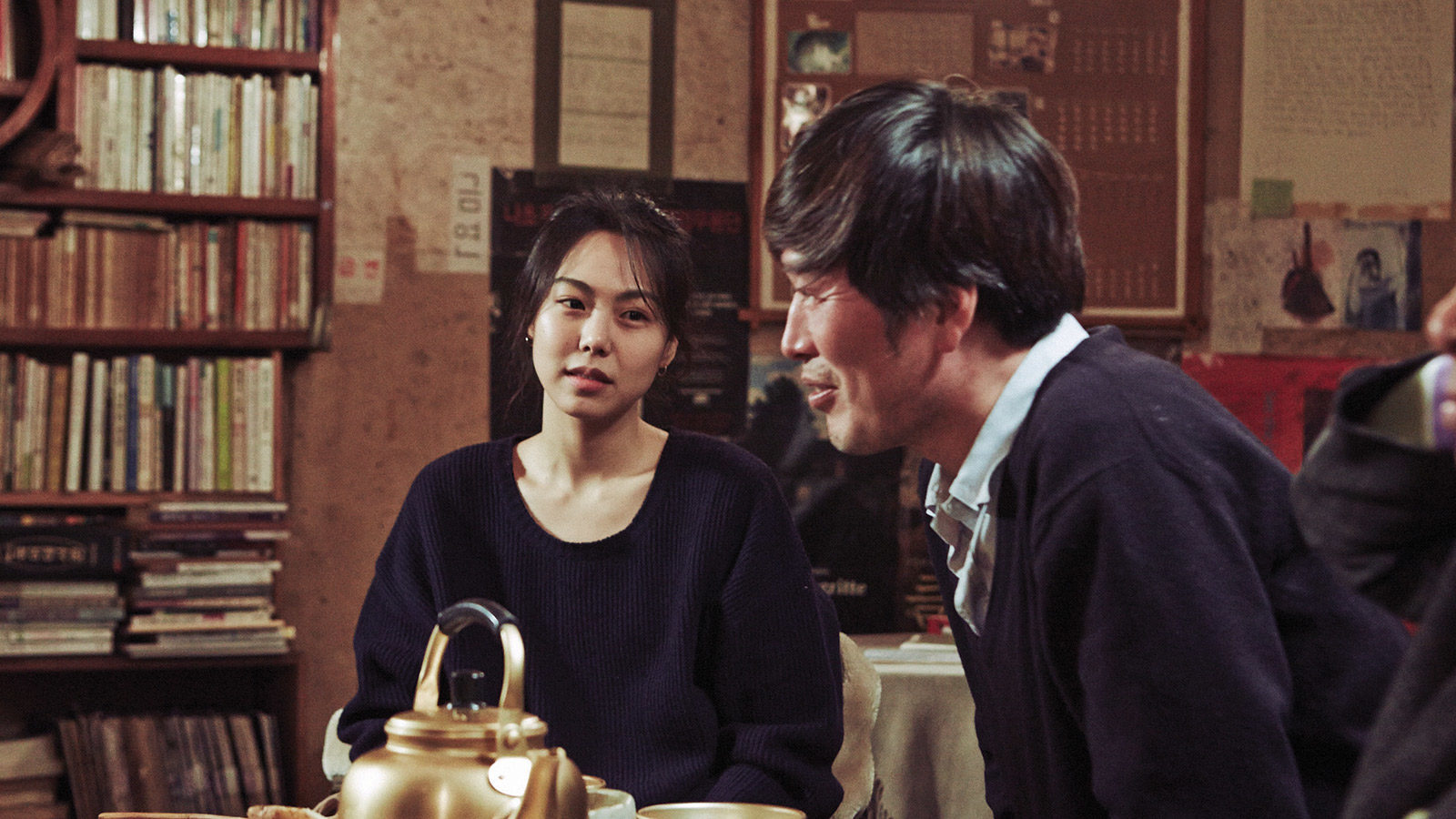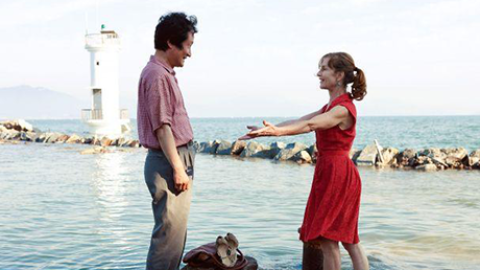By Max Nelson in the May-June 2016 Issue

Review: Right Now, Wrong Then
(Hong Sangsoo, South Korea, 2015)
For a filmmaker, the long take is a powerful check on possibility. Cuts generate options that demand decisions: whether to stay in a given setting or leave it; how to re-orient the camera; what to show next. A shot held at length, in contrast, imposes limits. The camera can only travel so far or negotiate a space so freely; an actor can only carry on for so long without making a mistake or running out of steam. Conversation scenes shot in long takes—like the ones that fill Right Now, Wrong Then, the most recent of Hong Sangsoo’s many films about restless male artists and the women they pursue—don’t show one possible order of re-arrangeable events. They show the only real thing there is to show: the situation that, in fact, was obtained in front of the camera. If you wanted to show anything happening differently without splitting up the shot (or digitally altering it), you would have to reshoot from scratch.

From the May-June 2016 Issue
Also in this issue
Hong is interested in the technical challenges lengthy shots pose. How can a filmmaker glean the benefits of long takes—a freer pace, a sense of unfaked naturalness, an impression of watching people gradually attract and repel one another in real time—while still suggesting that each shot represents only one possible arrangement of the many elements from which it’s combined?
There are two very long takes in Right Now, Wrong Then. Both show a male filmmaker named Cheon-soo (Jeong Jae-yeong) wooing Hee-jeong (Kim Min-hee), a young artist he’s just met in the city of Suwon, where he’s just arrived to give a talk. In both shots, the characters sit at the bar of a restaurant knocking back bottles of soju while the camera watches them from just further down the counter. The shot is duplicated because the movie itself splits down the middle. Its first half (“Right Then, Wrong Now”) shows the couple meeting at a tourist-trap temple, decamping to her studio, holing up for hours in the restaurant bar, and paying an ill-fated visit to several of her friends. The second half retells the same sequence of events with enough important variations to generate a radically new outcome.

The two long takes suggest a good deal about how Hong manipulates the romance at the center of this funny, ingenious, and prickly movie. It isn’t as if the scenes show two possible fallouts from the same event; instead, they show two possible ways in which the dynamic between these characters could be imagined, two different ratios in which these personalities could be combined. The first time, Cheon-soo showboats drunkenly. Hee-jeong pouts and flirts but keeps up her guard, as if she can’t decide whether he’s worth the trouble. When the scene repeats itself, his tone has deepened, softened, and sobered. Her announcement that she lacks close friends becomes a quavering confession rather than a boast. The inebriated declarations of love he makes in the scene’s first iteration mutate, in the second, into a tearful admission of what in the first go-round he only revealed later in the night—that he has a wife and two kids at home.
“These words float in my mind now,” Cheon-soo rants to a pompous critic during the Q&A that follows his screening at the end of the first episode. “But they’re just words. Myself, the movies, all the things I’ve experienced, all of your lives: they have nothing to do with words like these.” As with holding a take, he seems to suggest, putting words together means choosing a single formulation at the expense of any others. Usually, it means producing shots or sentences that come off as impoverished partial views. Hong specializes in figuring out how to forestall that outcome by letting multiple formulations of the same event dance inconclusively side by side—to refuse the choice between one “real thing” and another.
Max Nelson is an editorial assistant at The New York Review of Books. His FILM COMMENT column Restoration Row looks at new and forthcoming work in preservation and restoration.




